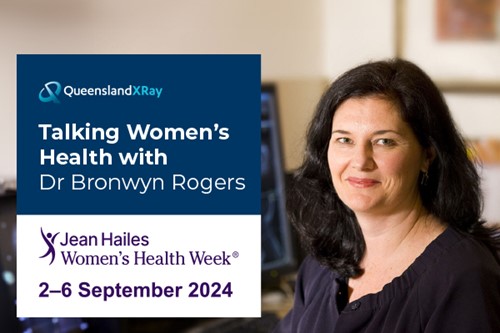Women’s Health Week, 2nd – 6th September, is a week dedicated to shining a light on some of the biggest issues in women’s health today and led by not-for-profit Jean Hailes for Women’s Health. Throughout this week we will be showcasing some of our Radiologists who specialise in women’s imaging, who share their perspectives on what it means to work in women’s health.
To mark Women’s Health Week, we approached Dr Bronwyn Rogers to hear about the important role radiology plays in women’s health today.
“Radiology is a diverse medical field that has evolved rapidly over my career and the sub specialty of women’s imaging is no exception. As treatment of breast cancer has advanced so has the role of radiology in diagnosis and pre-surgical and post-surgical assessment, with imaging playing an increasingly important role.”
Dr Rogers commenced her radiology career with an interest in women’s imaging and over the course of her career has seen this subspecialty rise in importance. She explains that “quality women’s imaging requires a dedicated team and greater patient interaction than other sub-specialties in radiology.”
“Queensland X-Ray is committed to providing first-class care and we know this is dependent on the technical equipment used. We pride ourselves on our state-of-the-art equipment for delivery of our women’s imaging services. Mammogram and ultrasound technology has continued to advance. MRI has changed the face of breast imaging, especially for those women considered at increased risk of breast cancer. Image display and storage has ensured timely comparisons which is critical to issuing an accurate report. Improvements in stereotactic mammography and ultrasound biopsy have changed practice, in some cases eliminating the need for surgery. Over the coming months, we are installing contrast mammography across a range of practices providing breast imaging and will now be able to perform biopsies utilising this technology”
Dr Rogers feels fortunate to work alongside a passionate group of radiologists, mammographers, sonographers, MRI technologists, nurses and clerical staff whose collective aim is to provide the best care for our patients.
“The friendly relationships and good lines of communication with referring GPs and Specialists is very important for best patient outcomes and we all play a role in that”.
“With breast imaging, many patients require imaging annually and it is rewarding to help women through what can be an understandably anxious experience.”

